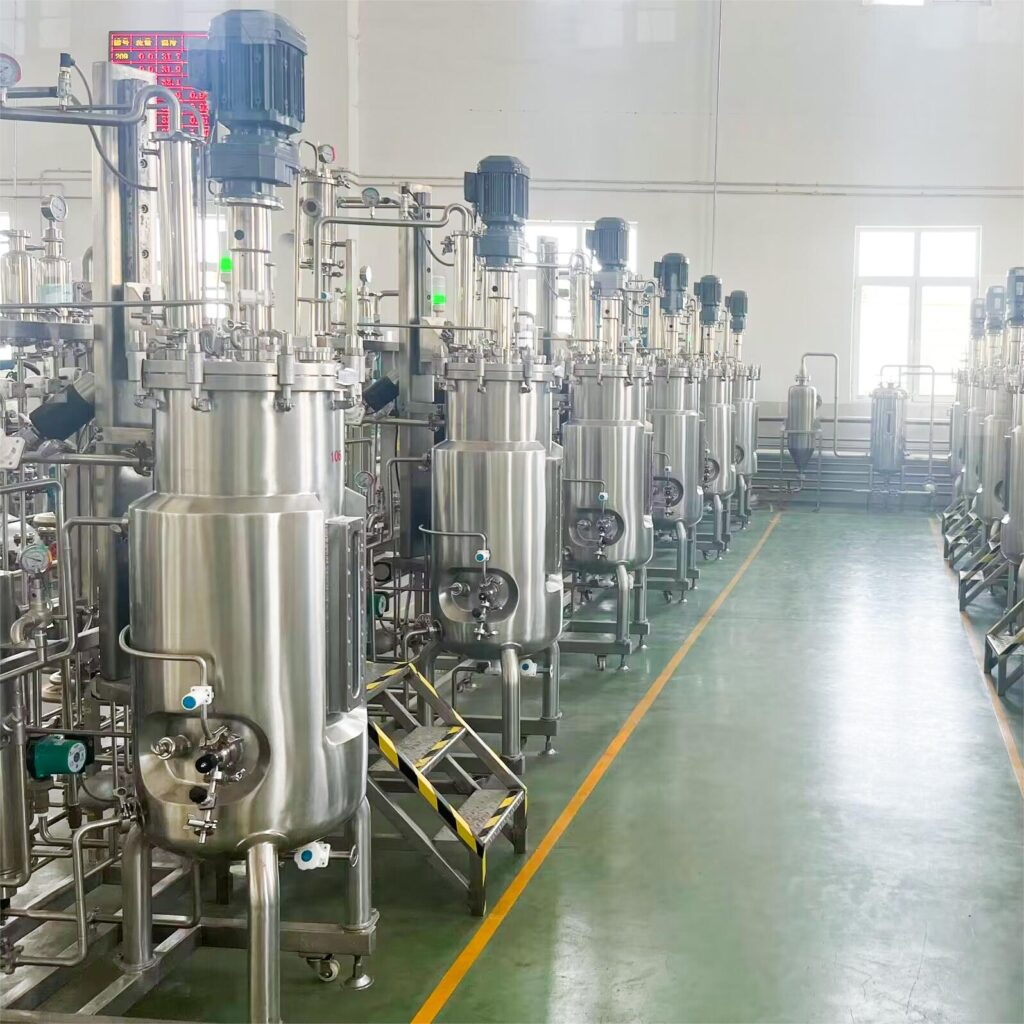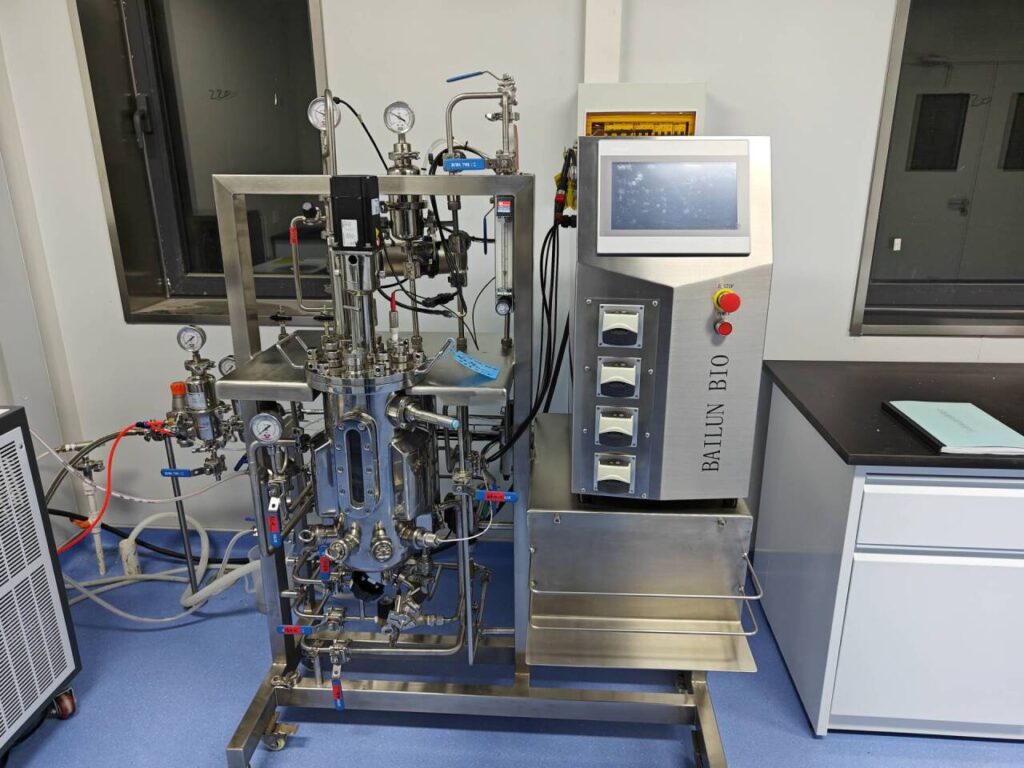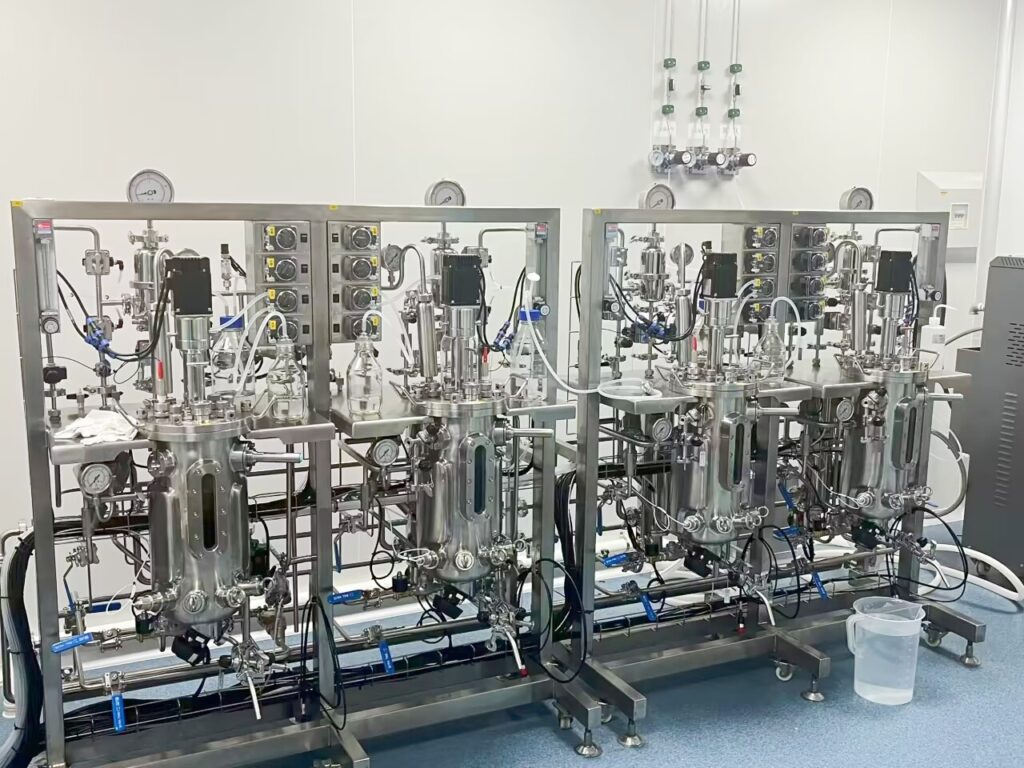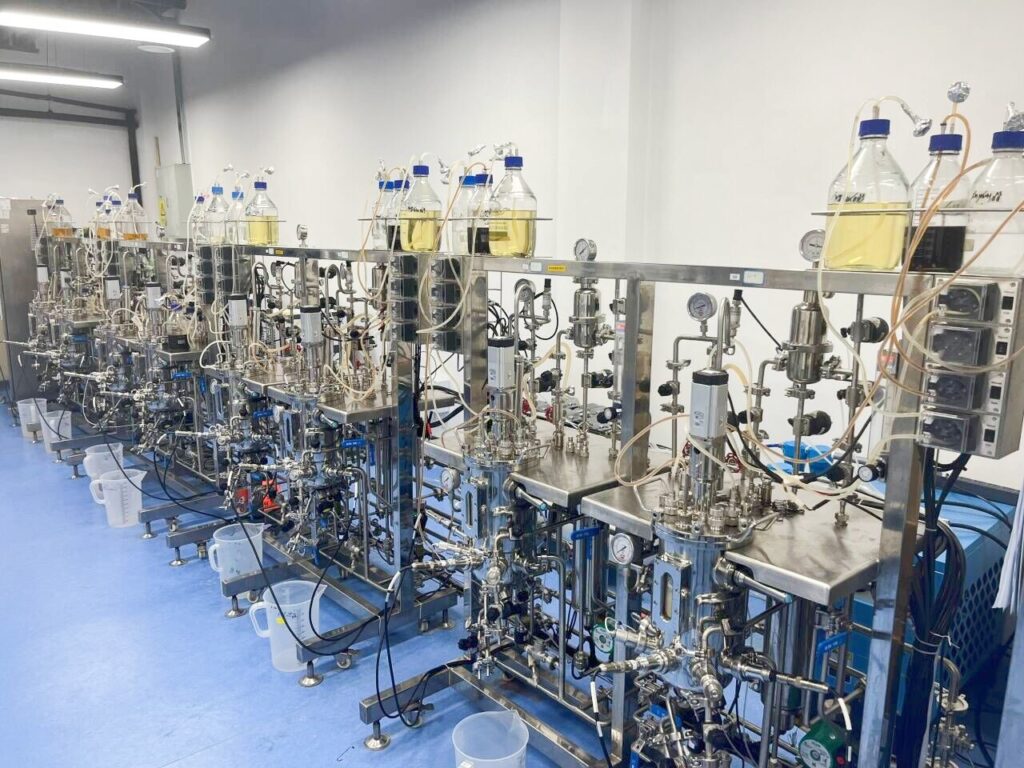
Fermenter is a device that serves the microbial fermentation process, and can play a role in cell culture, protein expression, yeast, bacterial strains, fungi, bacteria, biochemical research, and pharmaceuticals. Unlike petri dishes, fermenters have a larger volume and can carry out large-scale, high-density, and continuous stable fermentation processes. They also have automated management and data collection functions, which can greatly reduce the burden of manual operations.
Seed fermenters is a device used for preparing seed bacteria. Generally speaking, it is a pre cultivation device before the fermenter, and its core function is to ensure the quantity and quality of seed reproduction. Seed fermenters perform well in long-term preservation, amplification, and packaging of microorganisms, and are commonly used in industries such as microbiological testing, pharmaceuticals, food, and biochemistry.

The difference between fermenters and seed fermenters
- Different application fields
Fermenters are widely used in industries such as pharmaceuticals, food, brewing, and chemicals to produce various fermented products, such as equipment used for beer fermentation; And seed fermenters mainly play a role in biotechnology, food, medicine and other fields, such as fermentation of yogurt and lactic acid bacteria beverage mother liquor.
Determination of Seed Fermenter Levels
Seed fermenter level: refers to the number of times the seeds need to be cultured step by step for preparation, depending on:
(1) Characteristics of bacterial growth, spore germination, and bacterial reproduction rate;
(2) The capacity of the fermenter used.
For example:
Bacteria: grow quickly, have a small proportion of seed usage, and have fewer stages, with secondary fermentation.
Eggplant bottle → Seed fermenter → Fermenter
Mold: grows slowly, such as Penicillium, and undergoes tertiary fermentation
Spore suspension → Primary seed fermenter (27 ℃, 40 hours spore germination, mycelium production) → Secondary seed fermenter (27 ℃, 10-24 hours, rapid bacterial growth, thick mycelium) → Fermenter
Actinomycetes: grow slower, using four stage fermentation
Yeast: slower than bacteria, faster than mold, actinomycetes, usually using first grade seeds
Issues to be noted when determining the level of seed fermenters
(1) The fewer seed levels, the better, which can simplify the process and control, and reduce the chance of bacterial infection
(2) Too few seed levels, small inoculation amount, prolonged fermentation time, reduced productivity of the fermenter, and increased chances of bacterial infection
(3) Although the number of seed fermenters varies with the variety of products and production scale. But it is also related to the selected process conditions. If the cultivation conditions of the seed bioreactor are changed to accelerate spore germination and bacterial reproduction, the number of stages in the seed fermenter can also be correspondingly reduced.
The fermentation production of edible mushrooms often adopts secondary fermentation and tertiary fermentation. If calculated based on an inoculation volume of 10%, the final fermenters used are: 50 liters of primary seed fermenter, 500 liters of secondary seed bioreactor, and 5000 liters of fermenter. It is 100 liters and the fermenter is 1000 liters. Generally, two or more seed fermenters are paired with one fermenter, so that once one seed fermenter is infected with bacteria, there is still one seed bioreactor available for backup. The smaller the volume of the seed fermenter, the smaller the inoculation amount of shake bottle bacteria, and the lower the probability of contaminating miscellaneous bacteria.
If using fermenters of 10L and 25L, and mostly using three-stage fermentation, the corresponding secondary seed fermenter for a 10L fermenter (calculated at 75%) is 750mL, and the primary seed fermenter is 75mL. Similarly, a 25L fermenter corresponds to a secondary seed tank of 1800mL and a primary seed bioreactor of 180mL.

- Different functions
Fermenters are mainly responsible for the production of preparations, and must provide the necessary conditions for the life activities and metabolism of microorganisms, while also being easy to operate and control, in order to achieve process conditions and achieve high yields. The seed fermenter mainly serves as a cultivation tool for microbial seeds, used for cultivating and expanding microbial seeds to ensure the required bacterial volume for fermenter cultivation.
- Different equipment structures
Fermenters are usually of a closed structure, with a shell and tube structure at the bottom and a complete gas inlet and outlet and mixing device at the top, which can adjust parameters such as intake, exhaust, and stirring according to demand; Seed fermenters often adopt a double-layer or single-layer structure, equipped with conventional water stop valves and pre injection gas interfaces.
The volume of the it is relatively small, the structure is relatively simple, and it is usually equipped with a flame inoculation port. Generally speaking, fermenters have a larger volume than seed fermenters, more complex mixing and ventilation systems, and are easier to achieve automatic control.
- The operation mode is poor
Fermenters are widely used in industries such as pharmaceuticals, food, brewing, and chemical engineering to control the cultivation materials through mixing systems, ventilation, heating, and other methods. Seed fermenters are usually mixed horizontally or vertically using a blender, mainly used for microbial proliferation, fermentation stability, and storage.
- Different precision requirements
The fermentation process requires high precision in biological parameters, requiring all parameters in the tank to remain in a specific stable state, while also being able to collect and record data to ensure product quality. In contrast, the precision requirements for seed bioreactors are relatively low, and there is no need to consider the control and recording of other parameters while ensuring the quantity and quality of seed reproduction.
Fermenters and seed bioreactors are essential key equipment in the field of biological fermentation. Although they have some similarities in appearance, they have significant differences in function and structure, as well as differences in application scenarios. For different application needs, enterprises and research institutions can choose fermenters and seed fermenters reasonably based on specific production needs, in order to optimize fermentation processes, improve production efficiency and product quality.

